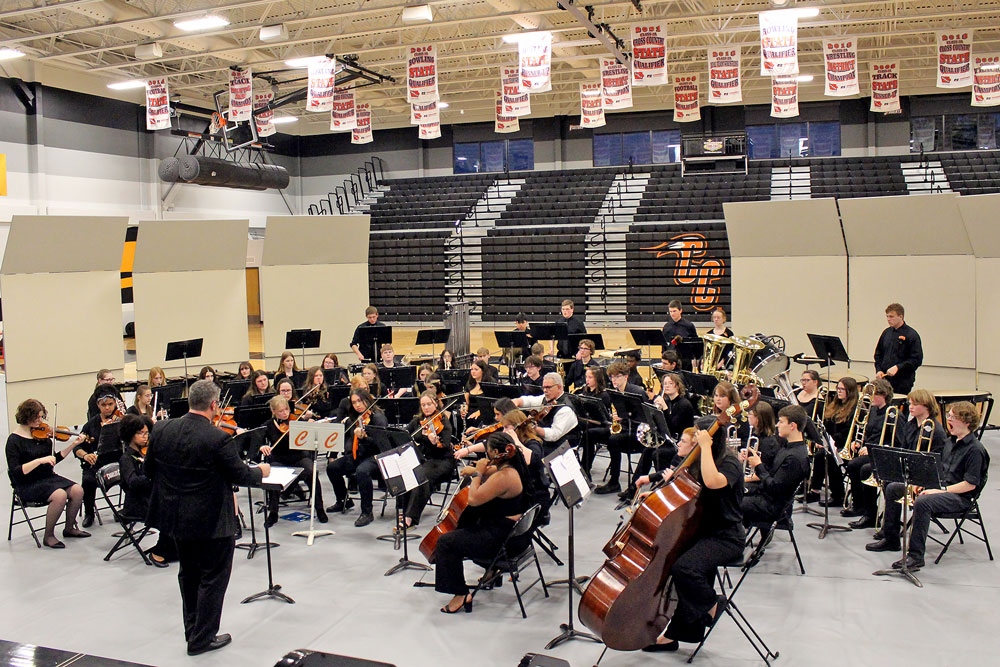Should prep sports be all about scholarships?
By John Burbridge sports@charlescitypress.com
There’s death, there are taxes … and there are grievances about taxes, the most reliable constant of the three.
These grievances tend to target the usual suspects — welfare and entitlement recipients … the individual type rather than the corporate type that continues to get a pass, or just has managed to fly under the wrath’s radar.
These individual recipients often get cursed whenever one studies the deductions from their pay stubs. But aside from where our taxes are going, shouldn’t there be an equivalent outcry to where they’re not going?
The U.S. Government contributes roughly 10 cents to every dollar spent on public K-12 education, less than most of the countries in the world. The rest comes from state and local taxes with property taxes taking up the bulk of the local.
As for college education, the government does offer aid and assistance but that still hasn’t prevented nearly 70 percent of bachelor degree graduates being saddled with more than $30,000 of student debt.
That’s why — even though I’m supposed to be an unbiased journalist — I feel a little happy for the student-athletes and their families whenever they get a portion (sometimes a little, sometimes a lot) of their college education paid for when they continue their athletic careers at a college or university.
Then again, college sports have not always been the setting for feel-good stories. And often the blame for the high cost of tuition has been associated with schools maintaining high-profile athletic programs and the stadiums and venues in which they play.
But perhaps the worst byproduct that has come from the play for paid college education system is that high school sports are too often leaned on as a means to get a scholarship.
During my time in northeast Iowa, I have not seen the trend assert itself in an overt manner. But during my time at another newspaper that encompassed a circulation area that spanned two states and five counties, our sports department was often deluged by disgruntled parents who thought their kids and/or schools were not getting the proper coverage.
Some, if not most, of the complaints were understandable. We couldn’t cover every school on every game night and were forced to pick the best and most-relevant matchups. Of course, opinions may vary when it comes to best and most-relevant matchups, especially among a parent who has a kid in one of these games and an editor who doesn’t. Regardless, the proper initial approach is to consider the customer — or subscriber — as always being right.
Except when they add this to their remonstrance: “How is my (son or daughter) supposed to get a scholarship offer if (he or she) never gets any coverage?”
High school sports and extracurricular activities have a much higher purpose than gaining scholarships alone.
They encourage young-adults to dedicate themselves to a cause that will require self-sacrifice, to work well with others to achieve a collective goal, to face adversity, to learn from success as well as failure, to take on the responsibilities to represent one’s community as well as the opportunity to be actively involved in it, and to effectively budget their time to meet the academic requirements to remain eligible as a student athlete.
In essence, athletics at the school level are an extension of the classroom. The lessons learned may enable participants to hone the skills to get a scholarship — an academic scholarship. If an athlete proves to good be enough to garner a sports scholarship … great. That could work, too.
But take into account that according to the National Federation of State High School Association, roughly $11 billion worth of academic scholarships are awarded annually to students in the United States compared to only $3 billion of awarded athletic scholarships.
Another thing I find more pleasing here than at the beat I used to work is the non-specialization of sports. At many of the schools around here, it’s all in during all seasons. Over there, too many parents have their kids concentrating on one sport throughout the year for a better chance at … you guessed it … athletic scholarships or even professional careers.
In Northwest Indiana, there was a proliferation of baseball and softball schools as well as elite traveling teams. They all clamored for press coverage as well as published tryout announcements, and often “kept score” when they thought they weren’t getting exposure comparable to their rivals.
Some of these baseball and softball academies and travel teams — often they were one of the same — charged up to $10,000 a year. I’m not making that up.
You can only assume at that point merely grooming someone for an athletic scholarship would be frivolous. This is a “major league” investment in hopes of a “major league” payoff.
Such “investments” from well-to-do families is one of the reasons baseball and softball are dying in the inner-cities. Athletes there just can’t compete and abandon the sport for good during their formative years.
But that’s a column for another day.








Social Share